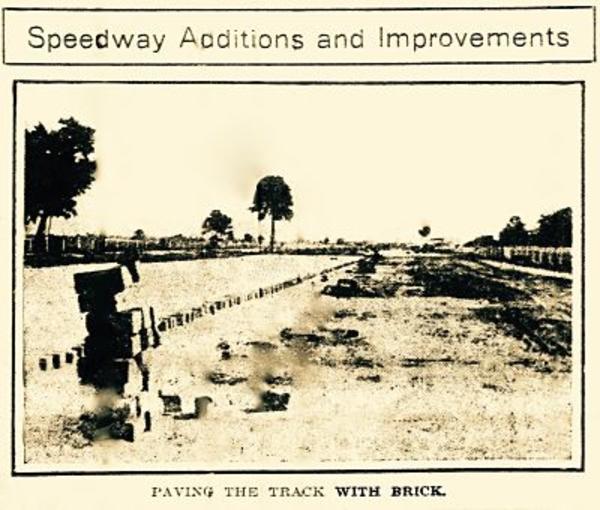- 1890s Cars
- Barney Oldfield Images
- Oldfield - Petersen
- Beer
- Early Auto Industry
- Uniontown - Marci McGuinness
- General Period Clip Art
- Early Race Related Clip Art
- Advertising and Editorial Cartoons
- Early Indianapolis
- IMS Construction
- Indianapolis Speedway
- First IMS Auto Races
- Failed 1909 Air Show
- 1909 IMS Balloon Races
- 1909 IMS Motorcycle Meet
- 1910 Indianapolis Auto Show
- 1913 Indianapolis 500
- 1919 Indianapolis 500
- Joe Dawson
- WWI "500" Winner Draft Cards
- Frank Di Buglione (off the wall art, LLC)
- Gilbert Art
- Carl Graham Fisher
- IMS Hall of Fame Museum
- Alco at 100th Anniversary
- Frederic Matile - Morris Park
- Miami-Fulford Speedway
- Paul Sheedy Collection
- Early Wyoming Racing - 1909 - 1919
- Personalities
- Early Racing Images
- Glidden Tour
- 1909 Cobe Trophy
- Fairmount Park & Belmont Estates
- Early Santa Monica
- Don Radbruch Collection
- Jeroen de Boer Collection 1910
- Jeroen de Boer Collection 1912
- Jeroen de Boer Collection 1913
- Jeroen de Boer Collection 1914
- Georges Boillot
- Story's Indianapolis 500 Cars
- Story's Sports Cars
- Story's Grand Prix Cars
- Old School
- Story's Brickyard Sketchbook
Brick Paving - IMS 1909
Photo Gallery Categories
Search
Featured Article
Image of The Week

This image is derived from a photograph published in the September 17, 1909, Indianapolis News. This photo is of the setting as work began to pave the Indianapolis Motor Speedway with bricks. Reportedly the work began the previous day on September 16. The project manager was Park Taliaferro "P.T." Andrews, the engineer who designed the original configuration and led the construction of the Speedway.
The process began with the selection of paving material and in addition to bricks, cement and even creosote wood blocks were considered. The contract to supply the bricks was won by the Wabash Clay Factory which hired 200 temporary workers and subcontracted with other brick suppliers to meet the order for 3.5 million units. The project had the attention of not just the racing community but also leaders of municipalities around the country and overseas. This was an era when communities were struggling to meet the need for improved roads as a direct result of the popularization of the automobiles. The National Paving Brick Manufacturers Association provided consultants to not only ensure top quality work but also learn from the process.
The project was triggered by the tragic events of the Speedway's first auto race meet where five men, including two spectators, who were killed in racing accidents. Speedway management not only predicted faster speeds but greater safety with a hard, durable surface where pounding tires could not dig ruts. Track officials had to present responsible behavior as others challenged the safety of the sport including Indiana's Lieutenant Governor who called for it to be banned.
| Attachment | Size |
|---|---|
| BrickPaveNews091709_opt.jpg | 41.81 KB |
